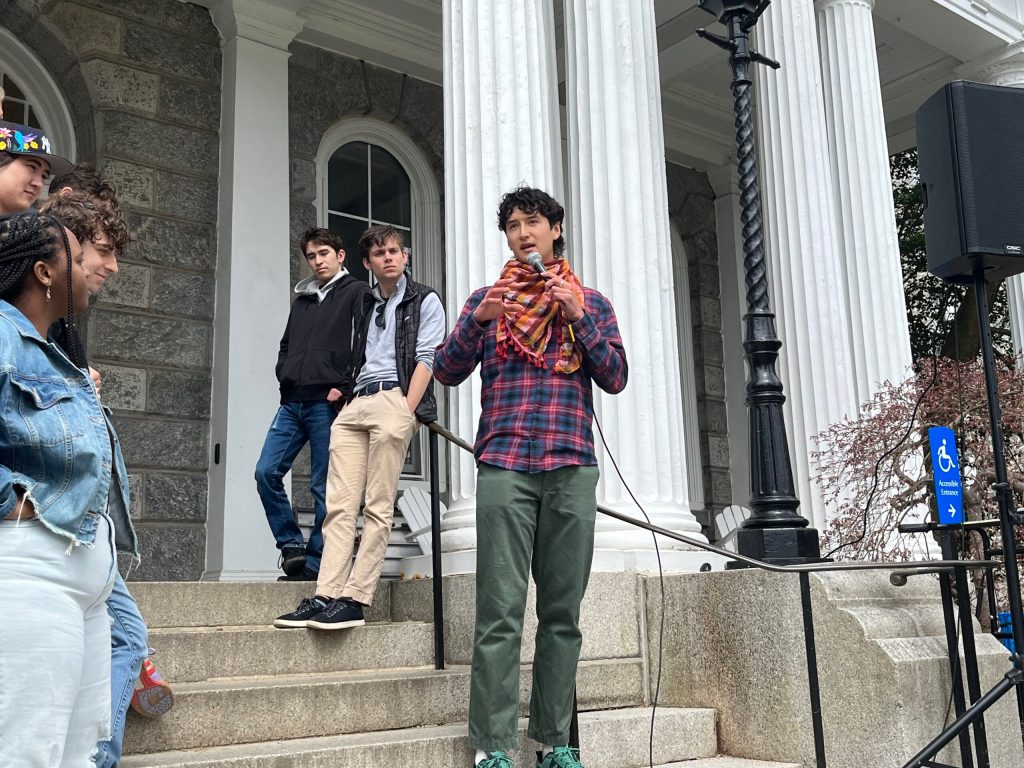On Monday, April 8, over 100 Swarthmore students, faculty, and community members gathered to watch a partial solar eclipse. Although Swarthmore was not in the path of totality for a full solar eclipse, the moon covered 88.8% of the sun, which viewers could watch on sunspotters reflecting the sun’s image and through protective eyewear provided by the physics and astronomy department. Some students and faculty also independently drove to areas in the path of totality, such as Cleveland and Northern Vermont.
Solomon Murdock ’24, a physics major, simulated the solar corona — the light coming off the outer parts of the sun — in his lab at Swarthmore. The eclipse allowed him to see the corona, typically blocked by the photosphere, the surface of the sun.
“My lab is investigating one of the processes that could explain the large temperature gradient between the corona and the photosphere,” Murdock said. “I think it’s cool that you actually get to see the corona here — normally its light is completely drowned out by the photosphere.
Visiting Assistant Professor of Physics and Astronomy Jeff Hyde researches neutrinos, particles produced by nuclear reactions that are not eclipsed by the moon. The study of why neutrinos are not eclipsed is ongoing in the field.
“The neutrinos that are produced in the sun’s nuclear reactions are passing right through the moon, right through us and right through the earth. It’s only an eclipse for visible light,” Hyde said. “[Neutrinos] don’t interact through electromagnetic interaction. They don’t have electric charge or anything like that. They only see something called the weak interaction, but some of the secrets of why they interact the way they do is a topic of continued study, which is something I’m working with.”
Eric Bromberg ’26, a physics major, noted the importance of real-world observation for his studies and interest in the field.
“There’s so much beauty in the universe, both in the fundamental physics and the coincidences they bring. This is one of the examples of a coincidence that creates something really incredible for people to experience,” he said. “It just so happens that the moon appears bigger in the sky than the sun so it can block it. Through experiencing that incredible coincidence, you get to see that all the inner workings of the universe come together to create something beautiful.”
Physics and astronomy students and faculty were not the only ones viewing the eclipse as a large section of the campus showed up to watch. David Cohen, professor of astronomy, appreciated the large attendance during the middle of the day for a scientific event.
“I think it’s really nice that people care about and get to participate in an interesting, beautiful, and rare natural event and I think it’s really nice we’re doing it collectively. Hundreds of people are here appreciating nature together,” Cohen said. “Some conversations are scientific: we’re talking about what’s causing this, what are the effects, or what’s the history. Some conversations are just aesthetic because it’s so beautiful.”














